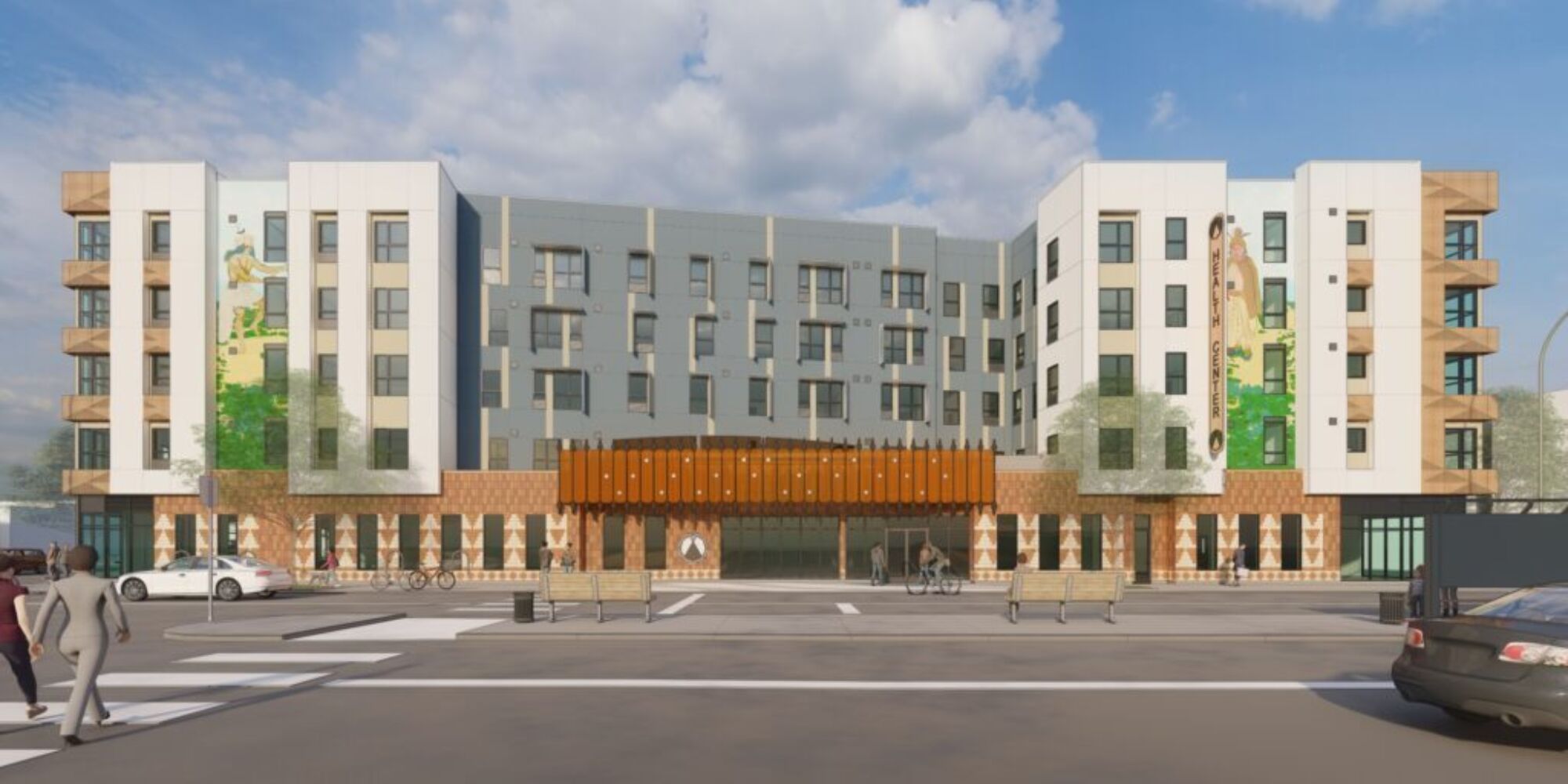Story: Native American Health Center
- Date of Investment
- March 2024
- Broadstreet Commitment
- $7.0 million NMTC equity
- Sponsor/Borrower
- Native American Health Center
- Investor
- Edwards Lifesciences PROPEL Fund (managed by Broadstreet)
- Uses
- Financing dental facility and community space offering services to low-income resident
- Impact Objective
- Health care, racial equity, jobs, redeveloping vacant land

The Sponsor
NAHC is a federally qualified health center (FQHC) that is building a new dental clinic and community space in Oakland, Calif., to meet the needs of under-resourced residents. Founded more than 50 years ago to serve the Bay Area’s Native population, NAHC now provides medical, dental, behavioral health, community wellness and social services to patients that reflect the locally rooted community of region. Its 275 employees serve 12,000 patients across 17 sites, including through clinics, school-based programs and Women, Infants and Children (WIC) locations.
The Project
A new five-story development will provide dental, housing, and social services to people without access to the opportunities they need to thrive—particularly people with low incomes and people of color. On a vacant lot formerly owned by the city, NAHC is building a 9,800-square-foot dental clinic with 20 dental “operatories” to support 20,000 patient visits a year. It is also creating a 3,300-square foot community and cultural center that will host social services, Native gatherings and other local events for an estimated 4,200 people annually. Both will be located on the ground floor.
The upper levels of the building will be home to 75 units of affordable housing for families earning 20-50 percent of the area median income. Satellite Affordable Housing Associates (SAHA) is developing and financing the housing portion of the project and will manage the housing once completed.
Impact Statistics
- $7M Broadstreet NMTC Equity Investment
- 52 Projected Permanent Jobs Created
- 20,000 Projected New Dental Patients Served
The Impact
Broadstreet is providing nearly $7 million in New Markets Tax Credit financing through the Edwards Lifesciences PROPEL Fund, which it manages. The project will support 52 new jobs, 16 retained positions, and as many as 175 construction jobs.
With its dental, social and community services (as well as affordable housing, financed separately by SAHA), the project helps address significant threats to the health and longevity of people with low incomes. In East Bay census tracts with the lowest poverty, for example, people live an average of 10 years longer than do people living in areas with the most poverty, like those living near NAHC.
Roughly one-third of local residents lack health insurance; 84 percent rely on food assistance; and health concerns, like hypertension and diabetes, are prevalent. Community members must often wait for six to nine months to get dental appointments due to the lack of services, which this project specifically addresses—and nearly all are low-income people of color. As such, this project also addresses a significant health equity gap in the Bay Area.